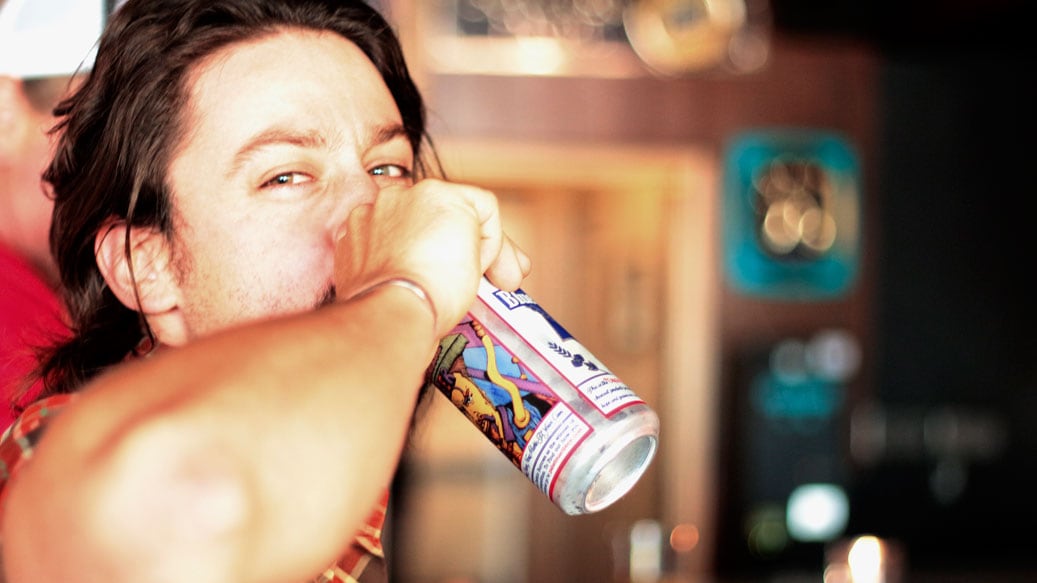At the turn of the millennium, Neal Stewart had one of the worst jobs in beer—brand manager for Pabst Blue Ribbon.
Sales of the century-old lager had been declining for 20 years at that point. It didn't help morale that Stewart's office was located in a brewery in San Antonio that had stopped actually producing beer.
"At times, it was demoralizing," he says. "I'm actually from St. Louis, and when I would tell friends in Anheuser-Busch country where I worked, they'd say, 'Oh, you work for that shitty beer company.'"
Around 2001, however, the brand started to show unexpected signs of life, in one market in particular.
"I remember looking at internal sales data, and the state of Oregon was just on fire—up 80 percent, then 90 percent," Stewart says. "It was like, what the hell is going on in Oregon?"
Even the company's regional rep was dumbfounded. So Pabst dispatched Stewart to Portland on a reconnaissance mission. He traced the boom to its ground zero: a laid-back dive in the Woodstock neighborhood called Lutz Tavern.

A handful of other Portland bars were also serving PBR at the time (defunct rock club EJ's allegedly offered a weekly "all you can drink" special). But Lutz is where it became a phenomenon. According to former manager Layne Martin, the bar acquired an "absolute scorching deal" on kegs and cases in the late '90s, allowing it to sell cans for $1.
Related: The Great PBR Debate.
After the bar's previous top seller, Blitz, went out of business, Lutz's influential clientele of Reed College students flocked to Pabst—flipping its image as a beer for "guys who are retired and want to fish," as Stewart puts it, to the drink of choice for young, hip, underemployed creatives.
"At one point, I know they said we were the largest distributor of Pabst in the state, if not the country," Martin told WW in 2015. "We were going through hundreds of cases and dozens of kegs a week."
It spread from there. Nearby Delta Cafe started serving 40-ounce bottles in champagne buckets. At the Ash Street Saloon downtown, Stewart met bike messengers so loyal to the brand they'd tattooed its logo across their backs. That led the company to start sponsoring bike messenger races, among other forms of alternative advertising—a strategy The New York Times called "the Marketing of No Marketing."
"The numbers started to explode, then we started to actively market it," Stewart says. "We'd ask how to replicate it—how do we do that in Denver? In New York City?"
Over the next five years, national sales of PBR increased 67 percent. But nothing hip can last. Sales of the beer have once again begun to trend downward, inspiring stories with headlines asking, "Is PBR Still Cool?" Even at the Lutz, its popularity has waned—according to one server, customers have shifted to another member of the Pabst family, Rainier.
Stewart himself turned away from PBR in 2006. He now works for Delaware craft brewery Dogfish Head. But he remains fond of his days with the "shitty beer company," when he came to Portland and caught lightning in a can.
"PBR was on the cutting edge of capitalizing on what consumers were looking for," he says. "The thing we did well was take a stroke of luck and not squander it."
See Related: These Are Portland's Biggest PBR Bars.

The Kelly's Olympian Piss Troughs | No Dancing at Goose Hollow Inn | The Horse Brass Exchange | When Kurt Met Courtney | The Starry Night Murder | Tonya Harding and Dockside | Lutz Tavern Saves PBR | Food Fight at Magic Garden | The Poet Under the Stairs | The Unlucky Devil Lounge

